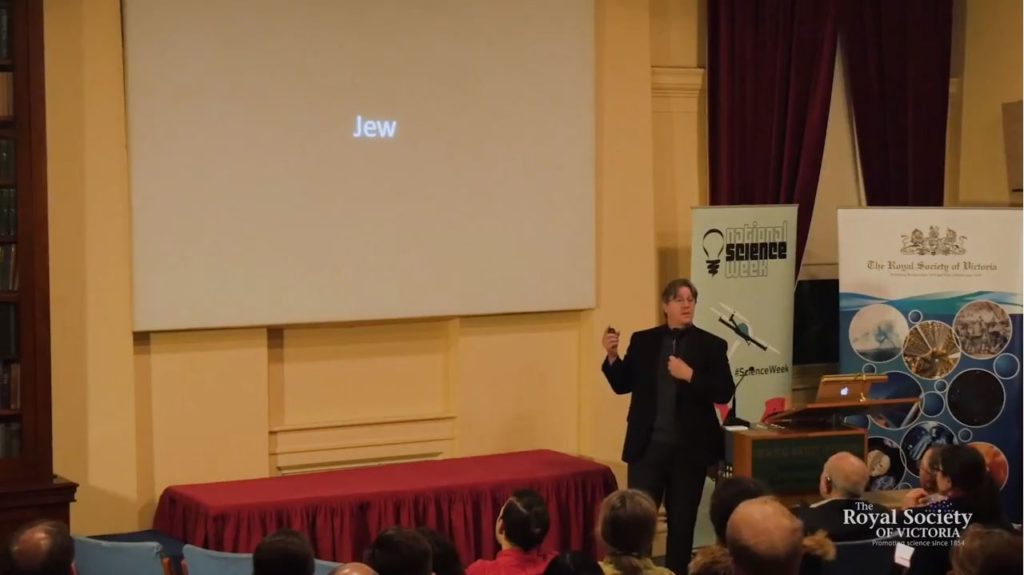The Neuroscience of Racism: Science and Stories
By Catriona Nguyen-Robertson
RSV Science Communications Officer
This article follows a presentation to the Royal Society of Victoria by Dr Larry Sherman, Professor of Neuroscience at Oregon Health and Science University on 18th August 2018, titled “You and Your Racist Brain: The Neuroscience of Prejudice.”
As a Jewish male growing up in the affluent town of La Jolla, California, Dr Larry Sherman’s experiences of racism and discrimination are most likely very different to mine – a Caucasian-Asian female who grew up in the very multicultural suburb of Footscray. When we get down to the psychology and neuroscience of prejudice, however, most people are the same.
As Dr Sherman stood up to present to the Royal Society of Victoria, the entire audience had made assumptions about him within a couple of microseconds. Our brains couldn’t help it. We saw Dr Sherman as a 6’1’’ tall man with brown hair, hazel eyes, and fair skin – but of course, that’s not all that makes him who he is.  We sometimes need a few seconds more to register that there is more to a person than meets the eye.
We sometimes need a few seconds more to register that there is more to a person than meets the eye.
People often say that we are not born racist, however the truth is actually more complicated: new-born infants exhibit no preference for faces of various ethnic groups, however from the age of 3 months, infants begin to take longer to scan faces – indicating that they are thinking more about appearances – and exhibit a preference for faces of their parents’ (and own) ethnic group(s)4. These findings imply that while we may not be born racist, our perceptions of ethnic differences are learned during early development as a result of exposure to own- versus other-race faces.
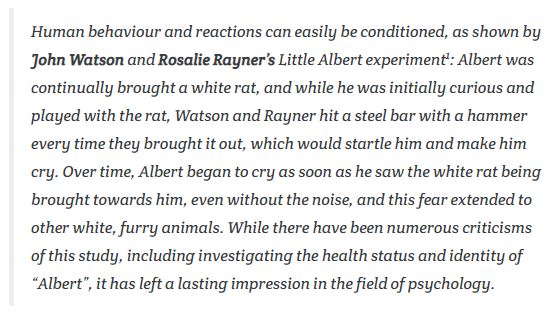 We teach children to avoid the topic of ethnic differences, as though it is taboo to mention that other people have different coloured skin. Rather than telling children that the reason some people have a darker skin tone is due to their greater levels of melanin pigment, they are often told simply not to ask about it – it’s “rude” and, by association, negative. Dr Sherman hypothesises that it is perhaps during this very early stage of development that it is critical to introduce the idea of racial differences in an open way, because no matter how much children are covered in “bubble wrap”, they will inevitably be exposed to people who look different to them. When this happens, it’s important that stereotypes aren’t associated with them (such as those that pervade the media) because those can “sink into [a child’s] brain”. While he is not a social scientist, Dr Sherman offered words of wisdom on how we can embrace racial identity without prejudice. He stresses the importance of not trying to be ‘colour blind’ – especially given that our brains seem to make that practically impossible – but that we should be accepting of the fact that we are a diverse species, with different experiences and valuable points of view.
We teach children to avoid the topic of ethnic differences, as though it is taboo to mention that other people have different coloured skin. Rather than telling children that the reason some people have a darker skin tone is due to their greater levels of melanin pigment, they are often told simply not to ask about it – it’s “rude” and, by association, negative. Dr Sherman hypothesises that it is perhaps during this very early stage of development that it is critical to introduce the idea of racial differences in an open way, because no matter how much children are covered in “bubble wrap”, they will inevitably be exposed to people who look different to them. When this happens, it’s important that stereotypes aren’t associated with them (such as those that pervade the media) because those can “sink into [a child’s] brain”. While he is not a social scientist, Dr Sherman offered words of wisdom on how we can embrace racial identity without prejudice. He stresses the importance of not trying to be ‘colour blind’ – especially given that our brains seem to make that practically impossible – but that we should be accepting of the fact that we are a diverse species, with different experiences and valuable points of view.
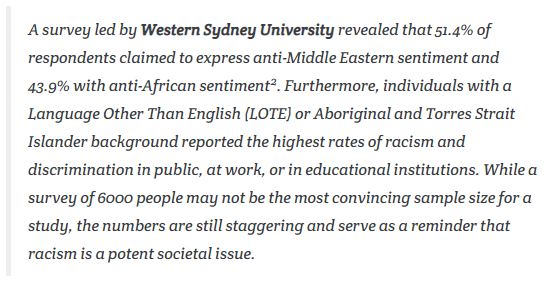 We perceive people who are not like us as ‘outer’ and can even fear them – and fear is a powerful driver of thinking and behaviour. Brenda Major and her colleagues demonstrated that learned fear extends to racial prejudice by performing several experiments in which people of different races gave either positive or negative feedback to each other, or played a word game similar to Boggle; when more prejudiced individuals played with a partner of the same ethnicity, they viewed it as a challenge, however when competing against or receiving feedback from someone of a different race, it was more often perceived as a threat5, thus a basic interaction is altered by the initial recognition of a face. I admit to prejudicial fear as a child: I was injured in kindergarten by a girl of a darker skin tone, and when I next came across another girl of a similar, darker skin tone in grade three, I was automatically apprehensive and kept a distance. While I never said anything to my new classmate, I told my mother on the first night of grade three, who explained to me that we shouldn’t group people of the same ethnicity together. The girl and I are still friends to this day and I’ve welcomed people of various ethnicities into my life since – it goes to show that we can undo the conditioning of our brains.without prejudice. He stresses the importance of not trying to be ‘colour blind’ – especially given that our brains seem to make that practically impossible – but that we should be accepting of the fact that we are a diverse species, with different experiences and valuable points of view.
We perceive people who are not like us as ‘outer’ and can even fear them – and fear is a powerful driver of thinking and behaviour. Brenda Major and her colleagues demonstrated that learned fear extends to racial prejudice by performing several experiments in which people of different races gave either positive or negative feedback to each other, or played a word game similar to Boggle; when more prejudiced individuals played with a partner of the same ethnicity, they viewed it as a challenge, however when competing against or receiving feedback from someone of a different race, it was more often perceived as a threat5, thus a basic interaction is altered by the initial recognition of a face. I admit to prejudicial fear as a child: I was injured in kindergarten by a girl of a darker skin tone, and when I next came across another girl of a similar, darker skin tone in grade three, I was automatically apprehensive and kept a distance. While I never said anything to my new classmate, I told my mother on the first night of grade three, who explained to me that we shouldn’t group people of the same ethnicity together. The girl and I are still friends to this day and I’ve welcomed people of various ethnicities into my life since – it goes to show that we can undo the conditioning of our brains.without prejudice. He stresses the importance of not trying to be ‘colour blind’ – especially given that our brains seem to make that practically impossible – but that we should be accepting of the fact that we are a diverse species, with different experiences and valuable points of view.
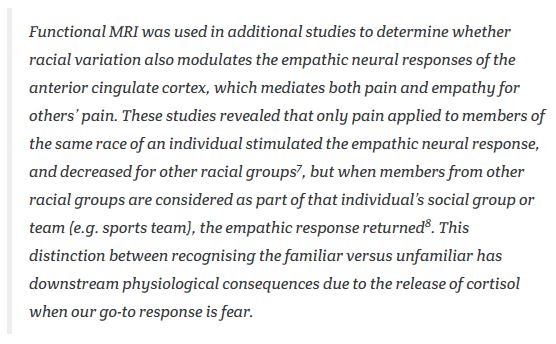 I may have had the help I needed to overcome it personally, but racism remains tenaciously embedded in our society. In order to understand the neural basis for prejudice, we have to take a closer look at the brain. Functional MRI can be used to map areas of the brain that are activated during facial recognition. Within milliseconds of seeing a face, people can take in the visual cues of race, gender, and approximate age. When European American males were shown flashes of unfamiliar, Caucasian faces as part of a Stanford University psychology and radiology study, the first area of the brain to be activated was the fusiform gyrus, which is involved in facial recognition6. When they were shown faces of people of colour on the other hand, the fusiform gyrus response was delayed, and the first area of the brain to respond was the amygdala, responsible for the fight or flight response; the face was not a face, but a threat. The amygdala response was annulled, however, if the person of colour’s face was that of a well-known person or a few character details were provide prior to the experiment – the face was a face again. There may have been something behind Dr Sherman’s mother’s comments to him when he was young, that “[African-Americans] all look the same to [her]”: when we are unfamiliar with people of different ethnicities, the amygdala initially groups them together as a possible threat, rather than the fusiform gyrus recognising their individual faces.
I may have had the help I needed to overcome it personally, but racism remains tenaciously embedded in our society. In order to understand the neural basis for prejudice, we have to take a closer look at the brain. Functional MRI can be used to map areas of the brain that are activated during facial recognition. Within milliseconds of seeing a face, people can take in the visual cues of race, gender, and approximate age. When European American males were shown flashes of unfamiliar, Caucasian faces as part of a Stanford University psychology and radiology study, the first area of the brain to be activated was the fusiform gyrus, which is involved in facial recognition6. When they were shown faces of people of colour on the other hand, the fusiform gyrus response was delayed, and the first area of the brain to respond was the amygdala, responsible for the fight or flight response; the face was not a face, but a threat. The amygdala response was annulled, however, if the person of colour’s face was that of a well-known person or a few character details were provide prior to the experiment – the face was a face again. There may have been something behind Dr Sherman’s mother’s comments to him when he was young, that “[African-Americans] all look the same to [her]”: when we are unfamiliar with people of different ethnicities, the amygdala initially groups them together as a possible threat, rather than the fusiform gyrus recognising their individual faces.
 The effects of stress and high cortisol (and, indirectly, racism) can also be passed down through generations via the epigenetic modifications of genes, as though ‘we leave traces of our social history in our offspring’. While it remains difficult to disentangle the exact relationship between parental trauma and downstream epigenetic effects, there was a correlation of epigenetic changes to a stress-related gene that is associated with post-traumatic stress disorder (PTSD) and depression: Holocaust survivors have greater methylation of this gene compared to study control groups of Jewish parents, whereas Holocaust survivor’s offspring had lower methylation compared to control offspring – perhaps children of Holocaust survivors inherited traits that promote resilience12. Dr Sherman generously shared his family history and own experiences of persecution as someone from a Jewish heritage. His grandfather was the only one of nine siblings who escaped anti-Jewish pogroms, and his grandmother lived in Austria, where her family were killed in the concentration camps of the Holocaust; his grandparents were some of the few of his ancestral lineage to make it out of Europe alive.
The effects of stress and high cortisol (and, indirectly, racism) can also be passed down through generations via the epigenetic modifications of genes, as though ‘we leave traces of our social history in our offspring’. While it remains difficult to disentangle the exact relationship between parental trauma and downstream epigenetic effects, there was a correlation of epigenetic changes to a stress-related gene that is associated with post-traumatic stress disorder (PTSD) and depression: Holocaust survivors have greater methylation of this gene compared to study control groups of Jewish parents, whereas Holocaust survivor’s offspring had lower methylation compared to control offspring – perhaps children of Holocaust survivors inherited traits that promote resilience12. Dr Sherman generously shared his family history and own experiences of persecution as someone from a Jewish heritage. His grandfather was the only one of nine siblings who escaped anti-Jewish pogroms, and his grandmother lived in Austria, where her family were killed in the concentration camps of the Holocaust; his grandparents were some of the few of his ancestral lineage to make it out of Europe alive. 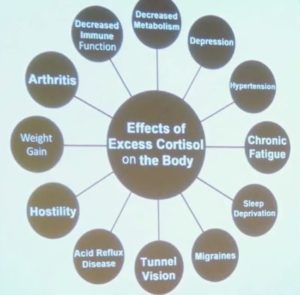 During Dr Sherman’s life, the only time being Jewish has given him particular grief was on the playground in primary school, when he was beaten up after informing another child that he didn’t go to a church, but to a synagogue, but he is unsure of whether he has personally inherited epigenetic modifications to his DNA as a result of ancestral persecution.When both victims of racism and racists themselves hold a fear of one another, their fight or flight response is constant – and while it’s beneficial to have this response in low doses, it is harmful when sustained. Chronic high levels of the “stress hormone” cortisol as a result of experiencing discrimination lead to weight gain, sleep deprivation, hostility, hypertension, a weakened immune system, and other negative health effects9. Also, individuals with higher perceived stress from internalised racism tend to have behavioural disengagement and cortisol dysregulation, putting them at greater risk of metabolic abnormalities10. Dr Sherman observed that the leading causes of death among African-Americans – heart disease, cancer, stroke, etc. – are all ailments that can be exacerbated by chronic cortisol elevation, and hypothesised that there may be a role of systemic racism in driving this11. High levels of cortisol also induce the death of neural stem cells, particularly effecting the hippocampus, which is involved in learning and memory, and therefore can be linked to decreased learning and memory capabilities, as well as depression. With so many detrimental effects to physical and emotional health, it is therefore unsurprising that Dr Sherman classifies racism not just as a social problem, but also as a “public health problem”.
During Dr Sherman’s life, the only time being Jewish has given him particular grief was on the playground in primary school, when he was beaten up after informing another child that he didn’t go to a church, but to a synagogue, but he is unsure of whether he has personally inherited epigenetic modifications to his DNA as a result of ancestral persecution.When both victims of racism and racists themselves hold a fear of one another, their fight or flight response is constant – and while it’s beneficial to have this response in low doses, it is harmful when sustained. Chronic high levels of the “stress hormone” cortisol as a result of experiencing discrimination lead to weight gain, sleep deprivation, hostility, hypertension, a weakened immune system, and other negative health effects9. Also, individuals with higher perceived stress from internalised racism tend to have behavioural disengagement and cortisol dysregulation, putting them at greater risk of metabolic abnormalities10. Dr Sherman observed that the leading causes of death among African-Americans – heart disease, cancer, stroke, etc. – are all ailments that can be exacerbated by chronic cortisol elevation, and hypothesised that there may be a role of systemic racism in driving this11. High levels of cortisol also induce the death of neural stem cells, particularly effecting the hippocampus, which is involved in learning and memory, and therefore can be linked to decreased learning and memory capabilities, as well as depression. With so many detrimental effects to physical and emotional health, it is therefore unsurprising that Dr Sherman classifies racism not just as a social problem, but also as a “public health problem”.

His story made me wonder what epigenetic changes may have been made to my own DNA from my parents’ histories. My mother was persecuted during the Fall of Saigon for being the daughter of an aristocrat. She was among the wave of Vietnamese refugees that arrived in Australia in the late 1970s, after spending time in a refugee camp in Indonesia. The traces of her high cortisol levels while being victimised as a refugee may therefore have been inherited in my epigenome. I’m fortunate in that I myself have never been a victim of racist behaviour – in fact, not many people realise that I’m part Vietnamese until they see my surname – although, growing up in the multicultural suburb of Footscray, I wouldn’t have been out of place either way. Sometimes I feel slightly isolated among the Vietnamese Community of Australia (VCA), as I can’t speak Vietnamese well and I’m usually the token Caucasian asked to dress up in a traditional ao dai and sing the Australian national anthem to open their formal events. This may go back to Dr Sherman’s idea that groups who have had to adapt to being a minority, such as the Vietnamese community in Australia, can occasionally be less welcoming of people from the dominant ‘inner’ group due to the sharp culture divide. Perhaps it’s because of this that I’ve often felt a little out of place among the Vietnamese growing up; however, the more VCA events I attend, the more I become a familiar face and they accept me a lot more.
In Anglophone nations, it’s interesting that when children are asked to describe themselves, Caucasian children will rarely if ever say that they are Caucasian; rather, they are ‘normal’, while people of a different, minority ethnicity tend to use their ethnic label as a self-descriptor. With growing awareness of racism and privilege, there begins to be a redefining of self and our core values. Dr Sherman referred to the stages of achieving racial identity described by William Cross and Janet Helms; we pay little attention to racial identity when young. However, as we become more aware of our differences, we must not only immerse ourselves within our respective ‘groups’ to validate and better understand shared experiences, but also emerse ourselves in the broader cultures and experiences as effective ambassadors of our own. Dr Sherman believes that we should be advocates for each other, working as a team to share our voices and experiences, because otherwise we will remain as ‘insiders vs outsiders,’ and ‘the majority versus minorities.’ Given that neuroscience suggests that racial tension is an issue of familiarity, he recommends getting to know our neighbours. In speaking to police associations, he encouraged them to bring back local, neighbourhood officers, who can enjoy a friendly game of sport with local people, reducing unfamiliarity and distrust on both sides.

We all have innate responses to faces – we naturally form opinions and notice particular characteristics about people – but the way we respond to faces is a learned behaviour. We physiologically become more receptive to the unfamiliar once it becomes familiar to us and we no longer see people who are different to us as threats. Perhaps it is simply a matter of getting to know the people around you and identifying with the people who may not look like you or members of your group. Racism is a social and public health problem for everyone involved – both racists and victims of racism – so it’s time that we try to understand the basis of prejudice and racist attitudes and did something about it, because the good news is that neuroscience shows that it’s certainly possible. The impacts of racism and racist behaviour are reversible: epigenetic modifications to DNA may be reversed, neural stem cells can recover from high levels of cortisol if it is removed from the equation, and it is possible to create new neurons (neurogenesis) and re-wire circuits in the brain13. A neural pathway is created whenever certain thoughts and behaviours are repeated often enough, so it is possible to undo negative, racist behaviours and attitudes.

As someone who has family from both Scotland and Vietnam, interacts with people from a myriad of backgrounds (Footscray is as diverse as a Melbourne city gets), and have good friends who came out as transgender or gay, I honestly harbour no prejudicial thoughts towards any particular group, which goes to show that perhaps it is familiarity that is the key to minimising racist attitudes and behaviour. While I may only be one person and not reflective of the entire population, my story, in amongst the overwhelming evidence discussed by Dr Sherman, suggests that if we can rewire the brain to see diverse people in the same way, we may be able to do something about racism.
References
- Watson, J.B. & Rayner, R. Conditioned emotional reactions. Journal of experimental psychology 3, 1 (1920).
- Kathleen Blair, K.D., AlannaKamp, Oishee Alam. Challenging Racism Project 2015-16 National Survey Report. Penrith, N.S.W., Australia: Western Sydney University; 2017.
- Spencer, M.B. Personal and group identity of Black children: An alternative synthesis. Genetic Psychology Monographs 106, 59-84 (1982).
- Kelly, D.J. et al. Three-month-olds, but not newborns, prefer own-race faces. Developmental science 8, F31-F36 (2005).
- Major, B. & Kunstman, J.W. Suspicion in Interracial Interactions: Using Measures of Cardiovascular Reactivity to Index Threat. In: Belle Derks, D.S., Naomi Ellemers (ed). Neuroscience of Prejudice and Intergroup Relations. Psychology Press: London, UK, 2013, pp 321-322
- Golby, A.J., Gabrieli, J.D., Chiao, J.Y. & Eberhardt, J.L. Differential responses in the fusiform region to same-race and other-race faces. Nat Neurosci 4, 845-850 (2001).
- Xu, X., Zuo, X., Wang, X. & Han, S. Do you feel my pain? Racial group membership modulates empathic neural responses. J Neurosci 29, 8525-8529 (2009).
- Sheng, F. & Han, S. Manipulations of cognitive strategies and intergroup relationships reduce the racial bias in empathic neural responses. Neuroimage 61, 786-797 (2012).
- Findling, J.W. & Young, J.W.F. Cushing’s Syndrome. The Journal of Clinical Endocrinology & Metabolism 90, E2-E2 (2005).
- Tull, E.S., Sheu, Y.T., Butler, C. & Cornelious, K. Relationships between perceived stress, coping behavior and cortisol secretion in women with high and low levels of internalized racism. J Natl Med Assoc 97, 206-212 (2005).
- Leading Causes of Death in Males, 2015 (current listing): Centres for Disease Control and Prevention; 2015.
- Yehuda, R. et al. Holocaust Exposure Induced Intergenerational Effects on FKBP5 Methylation. Biological Psychiatry 80, 372-380 (2016).
- Adlaf, E.W. et al. Adult-born neurons modify excitatory synaptic transmission to existing neurons. Elife 6 (2017).
A video of Dr Sherman’s lecture is available from the Society’s YouTube channel at https://youtu.be/r3N88xIWujE – a shorter version featuring an interview and lecture highlights is also available at https://youtu.be/4SwOEcJL_mA .


